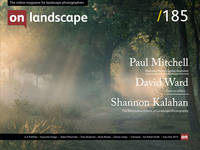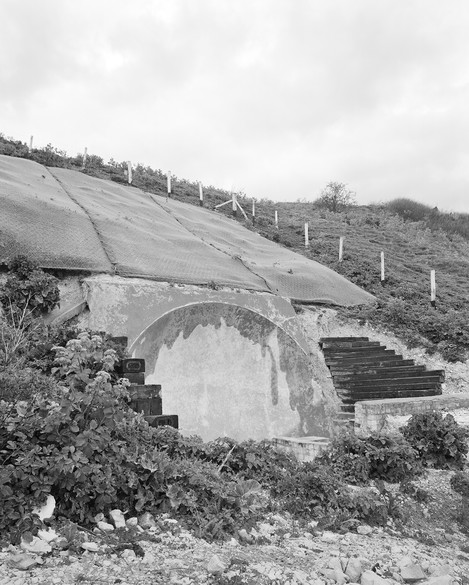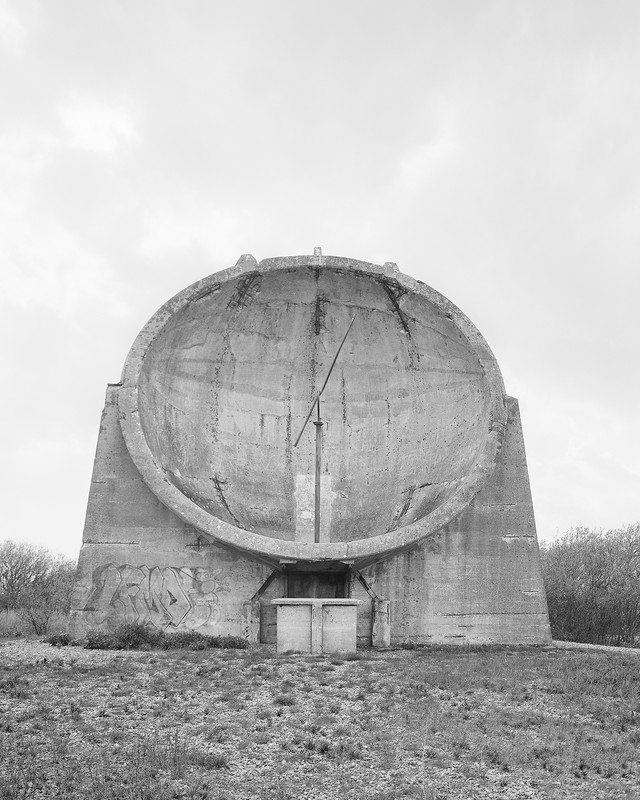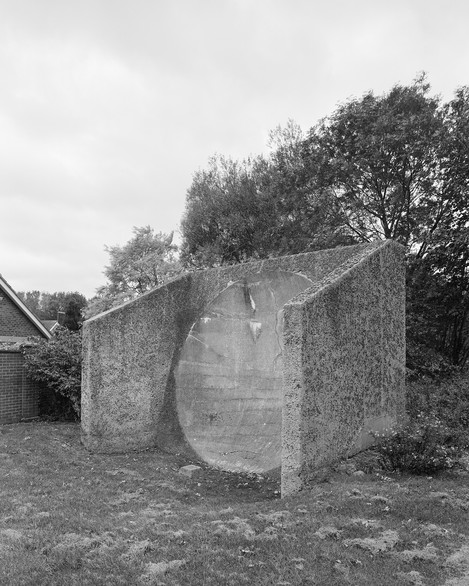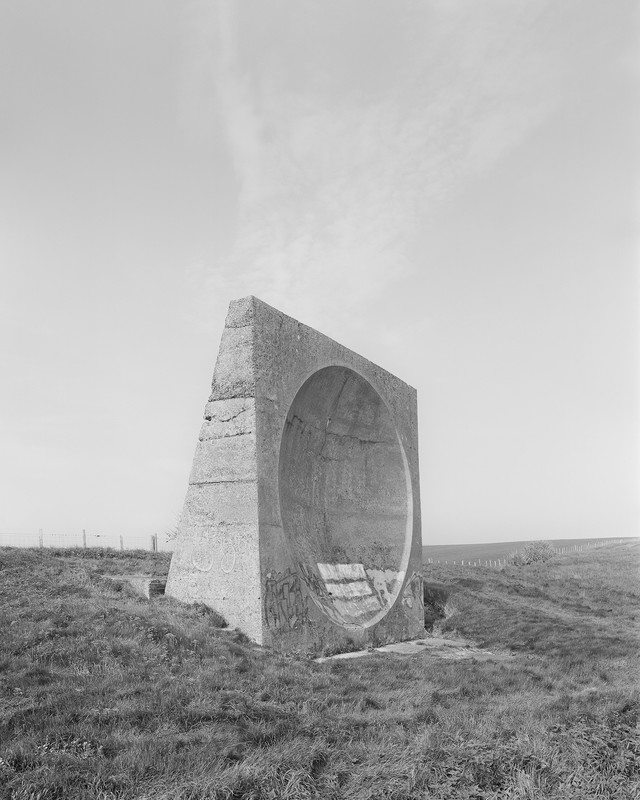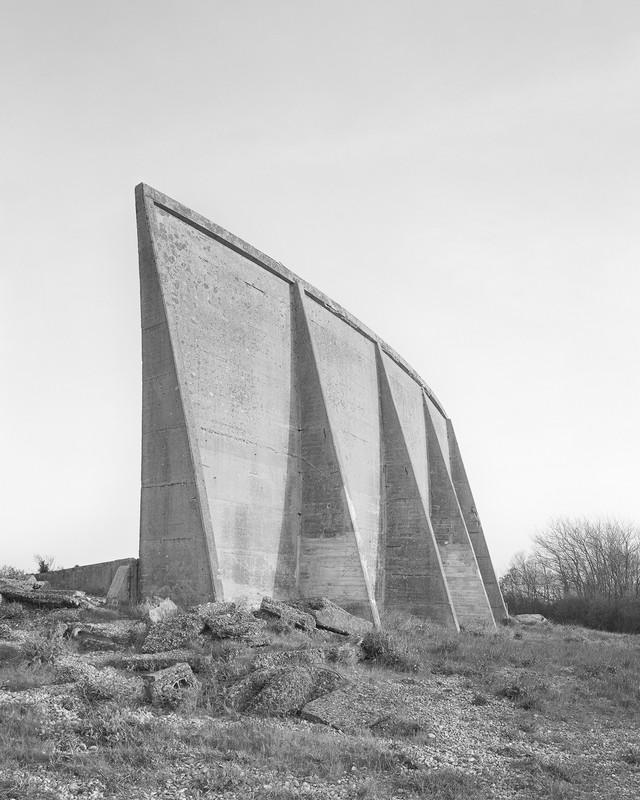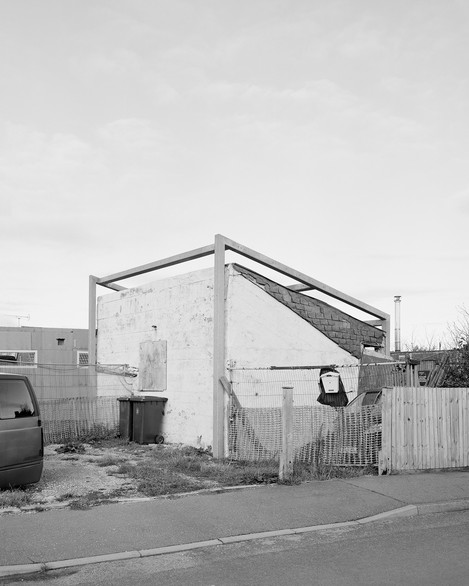The Sound Mirrors that once protected Britain

Joe Pettet-Smith
Joe Pettet-Smith is a photographer and artist based in Brighton, UK. His personal work is heavily research driven and takes the form of long term self-initiated projects. Joe’s photographs have been commissioned and published by a number of clients including the Guardian, F.T Weekend, Telegraph Magazine and the BBC.

Charlotte Parkin
Head of Marketing & Sub Editor for On Landscape. Dabble in digital photography, open water swimmer, cooking buff & yogi.
I was browsing the BBC News Magazine back in January 2019 when I came across this article 'The concrete blocks that once protected Britain'. I was drawn into the fascination of these structures: How were they built, where are they located, how did he find them all, were they all documented? The list of questions went on and I eventually got in touch with Joe to find out about his family connection to the sound mirrors and how he went about documenting part Britain's history.
What sparked your passion for photography?
The darkroom at my old college. It was 2010, I was at Exeter School of Art, which coincidentally had both black and white and colour darkrooms. It was the first time that breaking the rules and not just doing as you were told was encouraged. Being able to experiment and see the results appear under the red light was the most amazing thing. I would skip other classes and just spend hours in there.
You studied photography at Brighton University. How did this experience shape your photography?
Brighton was where I found my voice as a photographer. It was a safe environment where I could get things wrong and teach myself to be the photographer I always aspired to be. It also helped that one of my favourite photographers, Mark Power, was the professor at the time. I only had a few classes with him but it was enough to get me on the right path.
Why did you choose landscape photography as opposed to other genres?
Photography has always been my way of making sense of the world and my relation to it. Photographing the landscape came naturally to me. I have always enjoyed the solitude and adventure it brings. It took me some time to get the confidence to explore other genres. I was quite awkward and a bit shy when I first started out, apparently as a kid my mum had to essentially train me to look people in the eye when I spoke to them. Truth be told portraiture was not something that came naturally, I had to work at it. Now I love both.
Tell me about the photographers or artists that inspire you most. What books stimulated your interest in photography and who drove you forward, directly or indirectly, as you developed?
That does change from project to project but overall my main influences starting out were Alec Soth, Mark Power, Jem Southam, Simon Roberts, Nadav Kander and Broomberg and Chanarin. However, you don’t see any of their influences In Defence of Lost Causes.
In terms of books, Charlotte Cotton’s The Photograph as Contemporary Art was like the bible to me early on, it eased me into the inescapable and necessary theoretical side of photography.
Simon Roberts has a studio in Brighton, I met him within a few weeks of being here and he has been my mentor ever since.
Tell us a bit about the project 'In Defence of Lost Causes’. Where did it all start? What's your personal interest in this subject?
It started with a conversation I had with my dad the night before I moved to Brighton a few years ago. After the rest of the family had left the dinner table he shared a story he hadn't told before. He began to describe large concrete structures dotted along the coastline between Brighton and Dover, a precursor to radar that used sound to detect enemy aircraft that in turn, his dad had described to him. When I was a child he told me stories about my grandfather and his involvement in radar. One of his recurring jokes has always gone along the lines of, “It’s not rocket science, I should know, my dad was a rocket scientist.”
Initially, I was drawn to the family connection, but later after researching early aircraft defence experiments I became fascinated by the story of the sound mirrors.
How did the project evolve? Did you have to refine the vision of what you wanted to achieve?
Initially, I planned to walk the 90 odd miles along the coast from Brighton to Dover photographing anything that fit my dad’s original description of concrete concave structures dotted along the coastline. The resulting photographs would have played around with scale, representation and interpretation. To start with I didn’t want to see what the structures looked like but I couldn’t help myself, and then as soon as I saw a few examples of them online and learnt there were more around the country I knew I wanted to take a more topographical approach.
How did you go about researching where they were and the locations? Were they all documented or did you have to do a lot of in-depth analysis to get the information? Did you include all the sound mirrors? If not, how did you decide which ones to include?
There are whole books dedicated to them and they are well documented online with numerous blogs and forums that mention where they are located. The National Archives was also a valuable source of information which has maps, original documents and archival pictures of the sound mirrors in use.
Yes, I photographed every remaining sound mirror in the country.
Tell us about the project and how you planned it, how long it took, how did you decide in which sequence you chose to visit the locations.
I researched each of the locations and cross-referenced the information between different online sources. Once I had the coordinates I used Satellite view on Google Maps to confirm the locations before plotting each of them on a custom Google Map.
I photographed the Brighton to Dover leg in Spring of 2016, then was commissioned by FT Weekend to photograph the remaining structures on the Northern coast in November 2017.
Were there any of the sound mirrors that you found particularly challenging to photograph or were in interesting locations?
Each had their own challenges but the Warden Point sound mirror was particularly tricky. The structure was originally built on the cliff but due to erosion fell off into the sea some years ago. The majority of the time it is submerged but when the tide is fully out it is still accessible. Only half of the mirror still remains so I had to shoot it at an angle that would accentuate the concave. In my picture, black seaweed drapes over the bottom section of the structure and the cliffs behind purposefully align with the tideline markings.
The images tell a story of the sound mirrors and their significance in history and their failure. What visual (and non-visual) narrative did you want to leave the reader with when you were working on this project?
That any advancement, technologically, creatively or otherwise, takes years of experimentation and failure. That cutting edge technology of the day will eventually fall into ruin.
Photography is more than just a tool for observation, it can peel away the original context and function of a thing and transform it into something entirely different. Here we have a primitive military technology - that through amplification made the speed of sound faster than the speed of light - being presented as monuments of experimentation.
Tell me what your favourite two or three photographs from the series are and a little bit about them.
Visually my two favourites are Abbot’s Cliff and the 200ft wall at Dungeness. On an aesthetic level, they both do it for me, the feeling of awe is there and they both incite the sense of intrigue that I hoped for. This is more important to me than how I made the photographs but conveniently they both do have anecdotes.
Abbot’s Cliff
When I arrived at Abbot’s Cliff the light was still peak midday sun - perhaps the worst lighting for the sort of pictures that I make. The light was creating a distractingly unappealing orb shape in the centre of the structure. I took my time working out which angle I wanted to shoot the picture from, set up the camera and sat in the grass reading a book waiting for the sun to change position. It took several hours of waiting but the sun did eventually pass over creating an eclipse effect. For me, this slither of highlight makes the picture what it is.
200ft wall at Dungeness
I took the three pictures at Dungeness on the second trip I made to the site. They were originally built on marshland but now a line of housing separates them from the sea. Over the years they have been subjected to kids vandalising them and idiots on BMXs using them as half-pipes so the council built a moat around them to stop all access. The first time I went to make the pictures I underestimated how deep the surrounding flooded trench was - it’s practically a lake in places - so went home empty handed.
The second time I went back with an inflatable to put all my gear on, stripped down to swim shorts and swam across. I put my clothes back on and spent the afternoon working out which were the best angles to shoot the structures from. The 200ft wall at Dungeness is just that, a massive concrete wall some 30ft high and 200ft across. I photographed the back corner at a diagonal so it would fit in with the other pictures in the series but I love how strange it looks.
You used a large format camera for this project. Could you tell us a little about the camera and lenses you typically take on a trip and how their choice affects your photography?
To confess, I am a bit of a camera nerd. As much as ideas drive my work, the tools that I use are always highly considered. I don’t always use the same camera for every project, I tend to experiment with different set-ups before I find something that works. For In Defence of Lost Causes, I used an Ebony 45SU which is a non-foldable wooden 5x4 field camera that allows for fairly extreme camera movements for its class and bellows that can take wide lenses without any issues. I wanted the structures, which range from 15ft to 30ft high, to fit the same area of the frame, I ended up using a Schneider 90mm f/8 which has a large enough image circle for extreme movements. In terms of camera movements, all of the images in the series used front-rise but occasionally swing as well (Selsely) to help with diagonal perspective and on occasions tilt (Dover 15ft) to change the focal plane to keep my shutter speed high enough to avoid slow-mo plants in the foreground.
In most photographers lives there are 'epiphanic’ moments where things become clear, or new directions are formed. What were your two main moments and how did they change your photography?
Yes definitely, these eureka moments where things just start to make sense. I remember the moment that I decided I wanted to be a photographer. I was maybe 17 years old, on a foundation photography course, trying to find quarries to photograph. It was before I was educated in the history of photography. I had this raw, untainted by the burden of research, idea that I would photograph quarries as if they were beautiful rolling landscapes. No one told me landscapes didn’t have to be idyllic views, that landscapes could also be of scenes tainted by man. Now, of course, this idea is unoriginal but at the time I had no idea. After hours of driving around, I eventually found a claypit quarry in St. Austell, Cornwall, UK. I remember scrambling up this slope, looking up and just dropping to the floor in total awe. I just sat there looking at the landscape in front of me for what felt like hours. The water at the bottom was a bright turquoise, the white sweeping cliff edge on the opposing side was marked with streaks of pink. A miniature forest had grown in the basin of the void and ducks swam carelessly in the bright pool. I tumbled down the steep slope and all of a sudden I was in another world.
The second hasn’t really happened yet.
If one of our readers was thinking about embarking upon a large project similar to yours, what insights and learnings would you give them?
Chase subject matter that you can really get your teeth into, with research that excites you so much it keeps you awake at night and technical considerations you have to really work for. For the work that I do, if a project doesn’t do all of these things then it is not worth pursuing.
What is next for you? Where do you see your photography going in terms of subject and style?
I’m still working on a larger, more ambitious body of work called Preparations for the Worst-Case Scenario and hoping to finish it by the end of 2019.
Thanks for your time Joe in answering our questions. You can find out more about the project on Joe's website.
Do you have a project you'd like us to feature in On Landscape? Get in touch as we'd love to hear from you!

